Final Fantasy XVI, the most recent game in the franchise, was widely acclaimed by fans and critics for its optimized combat and the integration of battles with plot development, considered one of the best games in the series in years.
The game's bosses and the Eikonic battles are some of the biggest highlights when we think about FFXVI, where some present the most impressive aspects of the modern industry. In this article, we present the ten best Final Fantasy XVI bosses, ranked by their narrative and gameplay impact!
Ad
This article contains spoilers for Final Fantasy XVI.
Honorable Mentions
Before we break down our list of the best bosses, we've selected some battles that deserve an honorable mention for their narrative and gameplay.
Liquid Flame

Liquid Flame is an entity created by the Iron Kingdom's crystal to protect it and test Clive's potential as Mythos. The creature, however, faces another powerful adversary besides the hero: with a huge personal task in the events of this point in the story, Jill transforms into Shiva and tries to face the monster, but given how weakened her body is by the long years in which she was forced to use her powers, she ends up being no match for the creature and Clive, still with no control over Ifrit, intervenes and confronts Liquid Flame while Shiva uses her powers to prevent the lava from getting too close to the hero.
Liquid Flame is far from being a memorable boss, despite its unique patterns, but it deserves an honorable mention for being one of the few moments where we see Dominants joining forces to face an enemy.
Behemoth
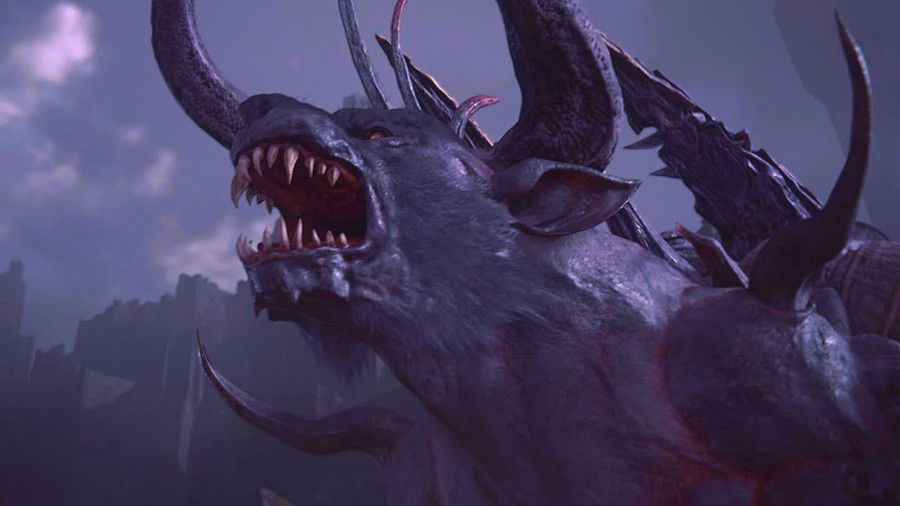
Behemoth, an iconic creature from the franchise and commonly associated with one of the most powerful enemies in end-game dungeons, reappears in Final Fantasy XVI for the first time as a boss at the entry gates to the Waloed Mothercrystal - and one that follows the tradition of having the ability to summon meteors.
In a challenging clash, Behemoth ensures a sense of urgency during the battle, especially during the cinematics and ATEs, where Clive and Joshua join forces to avoid the impact of a gigantic meteor.
Sleipnir Habard
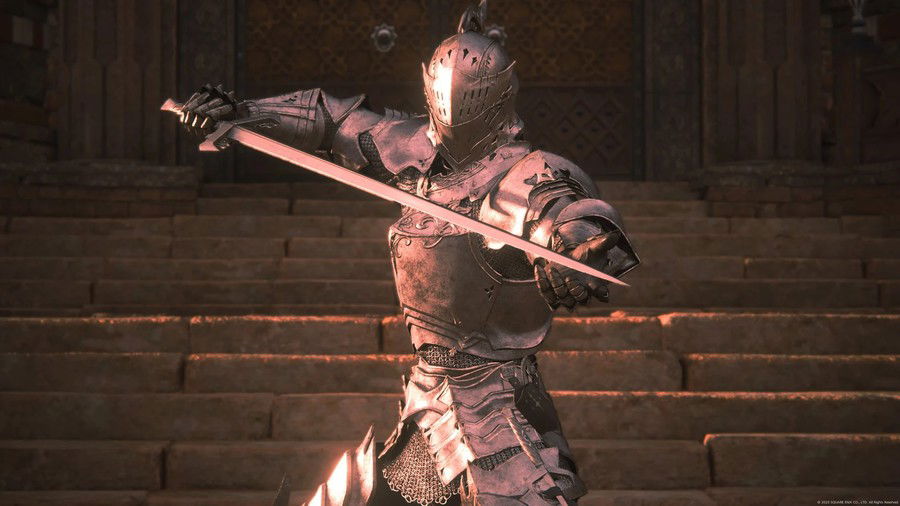
Habard is one of the most mysterious characters in Final Fantasy XVI. His first appearance demonstrates a pragmatic man who offers assistance to King Barnabas in political matters. As the game unfolds, his role in the story becomes even more uncertain when he kidnaps and manipulates Hugo Kupka into draining the ether from Dhalmekia's Mothecrystal, where we discover his command over Ultima's minions.
His role becomes clear only during his first clash with Clive, in the port city of Kanver, where he reveals his name, Sleipnir Habard, and uses a portion of Odin's powers to confront and test Mythos for his master.
It is later revealed that Habard is an egi, physical manifestations created by Dominants with their powers, not unlike Suparna and Chirada, created by Benedikta Harman with the powers of Garuda - except that the extent of Odin's powers allows Barnabas to create an almost endless amount of them if necessary.
Ad
The Best Final Fantasy XVI Bosses
The heads of this list were selected using the following criteria:
Narrative Impact - The more important the battle is to the plot, the better.
Visual Impact - Most memorable bosses in modern video game concepts include their presentation and visual effects as the battle unfolds.
Innovation - The more differentiated the pattern of movements and attacks, the more a boss stands out from the others.
Challenge - A boss isn't memorable if it doesn't at least offer players some challenge.
10 - Typhoon
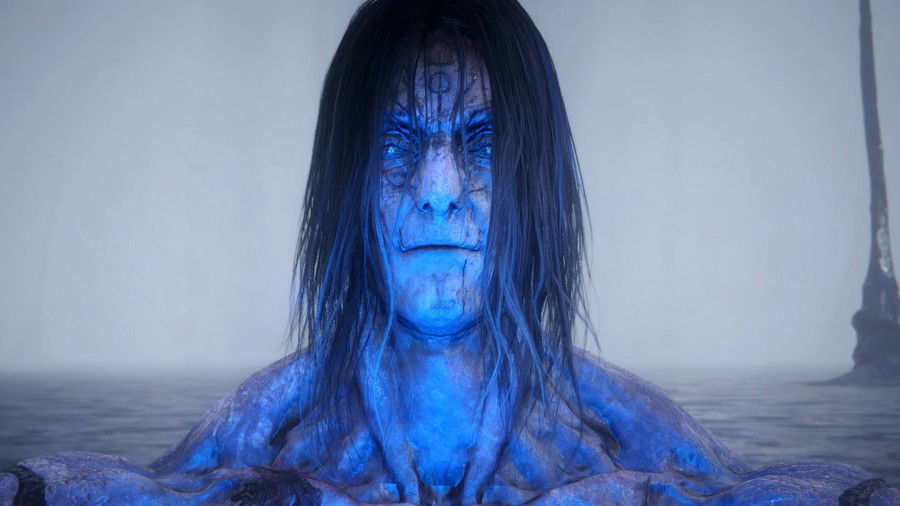
The destruction of the first Mothercrystal begins Cid's legacy to Valisthea. However, the appreciation of this historic milestone and the crystal's fading glow is short-lived: a mysterious creature, Typhoon, emerges from a portal and effortlessly takes down Ramuh, while the Eikon uses his staff to trap the monster. It then enters Clive's mind to test him in a battle.
With Garuda's powers and acceptance of his identity as the second Dominant of Fire, Clive has an efficient arsenal to confront Typhoon. This clash is the first time that we have more control over Ifrit, and greater autonomy over its movements, managing to dodge faster and run while the opponent uses lasers and teleportation.
If that wasn't enough, Typhoon, in an omen of the game's last boss, summons other versions of itself and transforms into a godlike being, but whose attack pattern differs little from the previous form. The end of the battle, with Ifrit shooting a gigantic fireball at the creature above it, demonstrates how much the Eikonic battles were inspired by some of the most iconic clashes in mainstream culture, with this being a reference to the Genki Dama technique , used by Goku in Dragon Ball Z.
The events that follow your victory over this boss symbolize the point of no return in Final Fantasy XVI, with a sudden change in the tone and plot development as we are introduced to the game's villain, Ultima.
The book Ultimania, released in 2023, gives more details about the Typhoon's origin and explains that the creature was a failed attempt to create Mythos, the perfect vessel, long before Clive Rosfield was born.
9 - Omega

The last challenge of the recently released expansion, Echoes of the Fallen , is a reference to Final Fantasy V's iconic secret boss, Omega, who became a recurring figure in the franchise, with appearances in Final Fantasy XII, Final Fantasy XIII-2, Final Fantasy XIV and Final Fantasy XV, as well as in spin-offs and relaunches.
As one of the creations of the Fallen to protect their artificial Mothercrystal and whose destructive power is as great as that of an Eikon, Omega is a great challenge even for more experienced players and with a super efficient skill setup: its movements are very fast, its attacks are very challenging to dodge and deals an absurd amount of damage.
Ad
If that wasn't enough, just like against Eikons, Omega is also a three-stage battle, with a very aggressive second form, capable of draining Clive's potions in a few attacks, while forcing out as much aggression as possible when staggered - a punishing element if your skills have a very high cooldown time or low damage, as the boss begins to suppress the surrounding dimension in the third stage, forcing the player to defeat it before it is too late.
In visual terms, Omega does not compare to the cinematic magnitude of the Eikons, but it offers an excellent parallel with the clash between Clive and Ultima, with several references in its technology that demonstrate how the close the Fallen were from becoming gods themselves.
8 - Benedikta Harman & Garuda
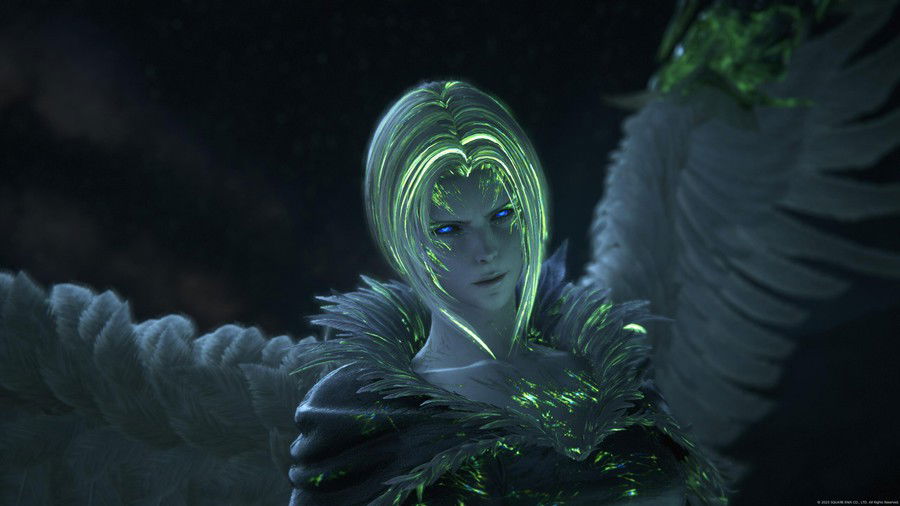
Benedikta Harman is the first Dominant that Clive faces consciously, and one of the first bosses in the game. The construction around this combat is shrouded in mystery: Benedikta and Cid clearly have unresolved issues and a troubled relationship, and it leads them to a duel where Cid is defeated.
In the battle, it becomes clear that, with Garuda's full powers and her semi-priming, Benedikta is much stronger than Clive as she floats in the skies, summon giant claws, creates tornadoes and even launches towers against the hero, which requires a joint effort with his partner, Torgal, to overcome it. The battle itself isn't hard in terms of gameplay, but it is the first moment where FFXVI presents a challenge.
The battle ends with Benedikta's defeat due to her arrogance, and the price is more expensive than she could imagine: Clive, unaware of his abilities as Mythos, absorbs the Garuda's powers and, for an instant, she loses access to her Eikon and becomes as fragile as the Bearers she despises so much.
As Clive and Cid flee Caer Norvent, Benedikta is escorted back to Waloed, the succession of shocking events continues as her guards are killed by smugglers, and as they surround to take her, Benedikta recalls how she was saved from her enslavers by Cid.
Between the lines, the game demonstrates in this sequence how intrinsic Garuda is to Benedikta: the Eikon is not only a huge sense of identity for her, the trait that distinguishes her from the other Bearers and, consequently, separates her from her past, but also guarantees the means for her to never again suffer the abuse she experienced when she was a slave - for her, Garuda was everything.
When remembering her traumas, Benedikta manages to transform into Garuda, and allows herself to be carried away by her frenzy of anger at the wretched world in which she lives, creating several tornadoes and egis around Sanbreque, and it is up to Clive to stop her before it's too late. Her clash, however, reveals an even more shocking secret: Clive transforms into Ifrit, the second Eikon of Fire who murdered his brother, and he has no control over it at this time.
Ad
Final Fantasy XVI stands out for its intricate narrative between dialogue, cinematic actions and gameplay elements. Here, gameplay plays a fundamental role: in a battle reminiscent of Toho's kaiju movies, or the titans from the Attack on Titan anime series, Ifrit's movements are very basic, but the damage numbers on the screen and the destruction caused around the battle demonstrates the colossal consequences of a clash between Eikons.
The visual aggressiveness also stands out. At this point, the memory of Joshua's death remains very vivid for players, and both Ifrit and Garuda display a notorious pattern of irrational violence, a shocking reminder that we are now controlling the same Eikon that mercilessly murdered the Phoenix. In the end, between torn limbs, bloodbaths and burns, the battle ends with Benedikta's tragic death.
7 - Eikon of Fire

The emergence of the second Eikon of Fire, Ifrit, and his duel against the Phoenix are the trigger for the events that move the plot of Final Fantasy XVI, to the point that this moment is the game's logo. In the first minute, we have a foreshadowing of this clash, but even with all the information surrounding its outcome, we could never imagine how it would happen.
With Sanbreque's invasion of the Phoenix Gate, Rosaria's plans take an unexpected turn, and Elwin's death induces Joshua's transformation, but without much control over the Phoenix's powers. However, his awakening also frees Ifrit after Clive spots a mysterious hooded man. A direct fight between both creatures ensues, with Phoenix pushing Ifrit into Rosaria's underground.
This battle stands out for not only being one of the few moments where we don't control Clive, but also for betting on a gameplay change to a shooter, where we need to aim at Ifrit to hit him with projectiles while dodging his jumps and advances, since he doesn't know how to fly. This change of pace is reminiscent of another Square Enix game where Action RPG elements were mixed with different gameplay methods in certain sequences, NieR: Automata.
Joshua's growing resolve in the midst of danger is notable. His despair and fear soon turn into determination to save Rosaria and her people in the face of a bigger threat, and while he doesn't understand how another Fire Eikon came to be, he perceives it as a threat against Rosaria, which he needs to deal with at any cost.
However, Ifrit is too powerful, and the duel turns into a grotesque act of graphic violence, capable of shocking and turning the players' stomachs as Joshua begs Clive to help him. Once witnessed, the Phoenix's death is impactful for the interlocutor and requires some time to be digested while immersing us in how traumatic this moment is for Clive.
6 - Hugo Kupka
Ad
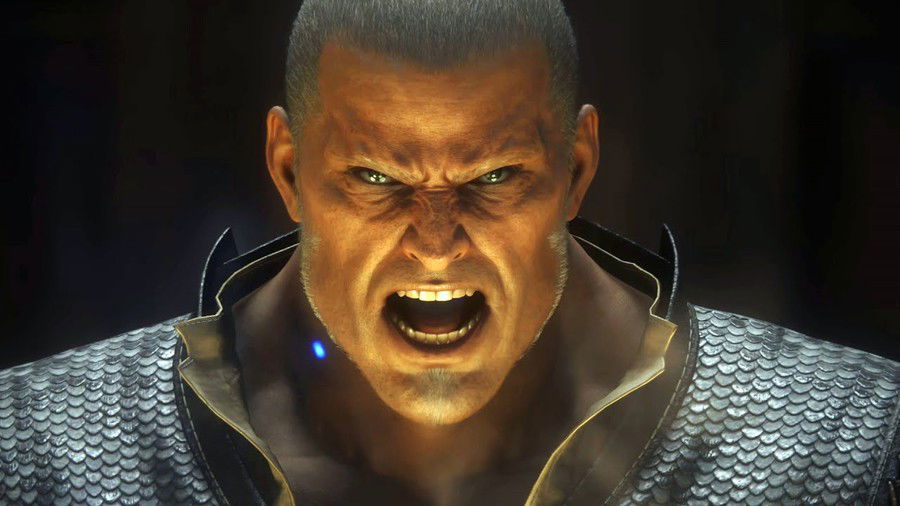
There is a certain "beauty" in writing and presenting a scene where two people fight just because they want to kill the other - and that is the heart of the duel between Clive Rosfield and Hugo Kupka during the Dhalmekian invasion at Rosaria.
The disagreements between the characters begin long before the fateful confrontation, when Hugo is led to believe that Cid murdered his lover, Benedikta Harman, and vents his anger against the Hideaway, destroying it and killing dozens of people in the process. Five years pass, even with the difficulty of finding a new home, Clive and the others manage to keep Cidolfus' legacy alive to the point where the protagonist assumes his name and public identity, to Hugo's dissatisfaction, who also decides to eliminate the man who assumed the role of "Cid".
Kupka goes to great lengths to reach his arch-enemy, going so far as to ally with Clive's mother, Anabella Rosfield, vicereine of the Holy Empire of Sanbreque with which Dhalmekia is at war over the invasion of the Crystalline Dominion, to carry out an invasion and ambush at Rosalith castle.
Not satisfied with burying the Hideaway, Hugo uses the invasion of his homeland to attract Clive and awaken his anger, destroying his old home, his family's legacy, as well as attempting to execute Jill before his eyes. His last act of insult is inside the castle, where Hugo destroys the stone throne with his own hands, but fury turns against him when the protagonist reveals that it was he, and not Cid, who murdered Benedikta - ensuring, for both of them, the opportunity to take revenge for the things they took from each other.
The battle against Hugo unfolds in two stages, with the first being an introduction to the opponent's abilities and an excellent way of adapting to the rhythm of the battle to attack him, as Titan's powers guarantee him excellent resistance without giving up his strength and speed, in addition to Hugo's ability to defend himself and counterattack Clive's blows.
Things get more serious when they both fall into the castle's basement, a perfect terrain for the Titan's dominant, surrounded by earth and sand. Hugo, therefore, uses attacks with larger areas of effect and longer-lasting impacts, while guaranteeing the same resistance to Clive's attacks that we saw in the previous phase.
With a little persistence and getting used to the opponent's defenses, players can overcome the challenge of this epic duel and follow its outcome, where Clive absorbs the Titan's powers, and before Hugo can finish him, the hero reacts with a quick attack of his sword, cutting off his enemy's hands.
5 - L3 + R3 Accept the Truth
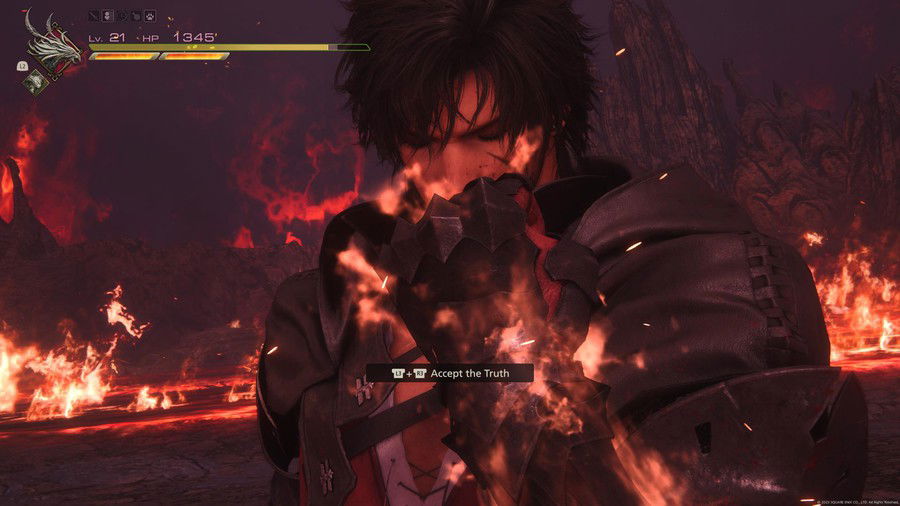
"L3 + R3 Accept the Truth" is the nickname given to the sequence where Clive returns to the Phoenix Gate, reaches the far reaches of the Fallen ruins and confronts his own conscience to accept his identity as the Ifrit's Dominant, and his responsibility as the person who "murdered" Joshua.
Ad
After the first time skip, Clive is marked by the trauma of Rosaria's Fall. For 13 years, the protagonist yearned for the opportunity to take revenge on the second Fire Dominant, and seized this opportunity the moment he freed himself from the bonds of Sanbreque and met Jill and Torgal again. His entire journey leading up to his confrontation with Benedikta revolved around finding this Dominant, only to discover that he is the very person he was chasing all this time.
This discovery shocks Clive and robs him of his will to live. If it weren't for the support of other characters, such as Cid, Gav, Jill and Torgal, he would have given up searching for the truth long before discovering the true events behind that night. At several points, Clive gives evidence of how his failure to protect Joshua is an inherent part of his personality, and when confronted with the truth, he finds the courage to accept his identity.
The hero's battle with his "shadow" is one of the most striking moments of Final Fantasy XVI and one of the highlights of Clive's development, with the famous scene where the player needs to press the L3 and R3 buttons simultaneously for Clive to accept the truth and use Ifrit's powers to win the battle.
4 - Barnabas & Odin

The king of Waloed, Barnabas Tharmr, is known in Valisthea for his mastery of the art of war and sword skill to the point of dominating the entire continent of Ash with his army during the war against the Orcs. Therefore, it was expected that his mastery with the blade would be much superior to that of Clive - as proven in the first clash between them soon after the hero defeated Habard, in Kanver, and also in the second clash in the sea, where Odin's blade was so powerful that it cut the ocean in half.
Clive requires maturity and more power to face Barnabas on an equal footing, and the fact that this battle is much more focused on hand-to-hand confrontation than in their Eikon transformations - these are the cinematic parts - is an example of how the hero manages to surpass him in his own domain.
The duel between the two also represents a clash of ideals between Barnabas' belief in how humanity should give up its willpower and conscience to "god", while Clive believes in a world where everyone should be free to live under their own terms - while they strike blows at each other, both are also opposing the other's ideal of society.
There is a certain irony in this debate: Barnabas is Ultima's most loyal devotee, to the point of giving up his own life and will. In the name of his god, he was the active agent who orchestrated several events for Clive to confront the other Dominants, and his duel has the simple purpose of evaluating whether Mythos is a worthy vessel for his master - which is why he didn't kill the hero when he had the opportunity. However, in the third stage, Barnabas once again feels the pleasure of facing an worthy opponent and refuses to give up this happiness. He proves, with his own experience, that there are emotions worth having when we retain our humanity.
Ad
As for the battle, Barnabas is considered one of the hardest bosses, or the hardest, in Final Fantasy XVI. There are a dozen factors capable of making this combat a great challenge at all stages, as his attacks are challenging to dodge and require different defense patterns, in addition to causing huge chunks of damage.
If that wasn't enough, Barnabas is very efficient at defending himself, or ignoring attacks to continue fighting, which forces the battle around his actions, far from the frenetic pace we are used to against common enemies.
While he is not as flashy as the bosses in our Top 3, Barnabas certainly deserves his place in fourth position for offering an excellent combat narrative alongside a great gameplay challenge.
3 - Ultimalius
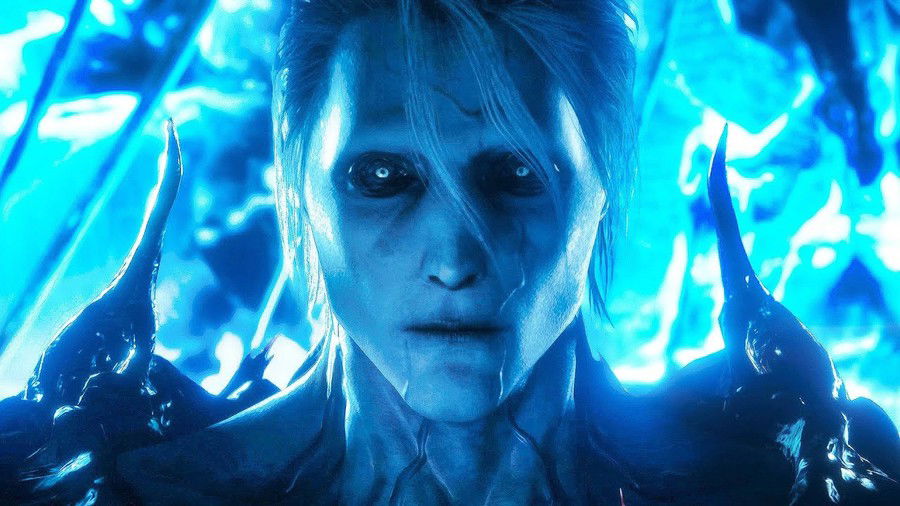
With so many incredible bosses and battles, it's impossible not to have high expectations about Final Fantasy XVI's last boss - and it lives up to expectations: Ultima is a recognizable force. Despite his defeat in the Interdimensional Rift, the emergence of Origin is proof that the villain is ready to execute his plan for rebirth, and when Clive, Joshua and Dion head to the enormous crystal tower in the heavens, there is no doubt that they are heading towards the final battle.
The clash against Ultima is the only one in the game with four stages. The first works as an interactive cutscene where Ifrit, Fênix and Bahamut join forces to face the villain. But as attacks are launched, it becomes clear that Ultima, even in his incomplete body, is too strong for the trio and can defeat them with ease. While there is no "real" challenge in this sequence, it helps establish the sense of danger and urgency present in the other stages.
The real battle begins as Ultima reunites with his other bodies and assumes his true form: Ultimalius, in a first stage where the villain uses powerful and iconic magic from the franchise, such as Holy, Flare and Meteor, to weaken his vessel. As the fight drags on, it becomes clear that Clive is determined not to surrender to the fate the villain has in store for him, and the hero's sense of conscience, in Ultima's view, corrupts him and turns him into Logos.
Refusing to accept that his perfect vessel is tainted, Ultimalius transforms into his Eikon form, where he breaks through the dimensional walls to face Ifrit in an incredible setting and with a cadence of powerful attacks, with lightning, teleportation, energy spheres and very punishing timers that make this the most challenging of all stages, and one of the hardest bosses in the game.
The best moment, however, is reserved for the end: in his third form, the villain uses the same powers of the Eikons absorbed by Clive against him. In a culmination of everything the hero has achieved up to this point, Clive counters Ultima's attacks with Eikons of the same element while listening to the support of his friends and allies. As Logos, Clive proves that humanity has transcended and evolved to the point where it no longer needs to serve a god to exist.
Ad
After overcoming Ultimalius with his Eikons, Clive throws his sword towards his enemy, piercing him while giving us one of the most satisfying ways to defeat a final boss in the video games' history: with a beautiful and well-applied punch to the face.
2 - Titan
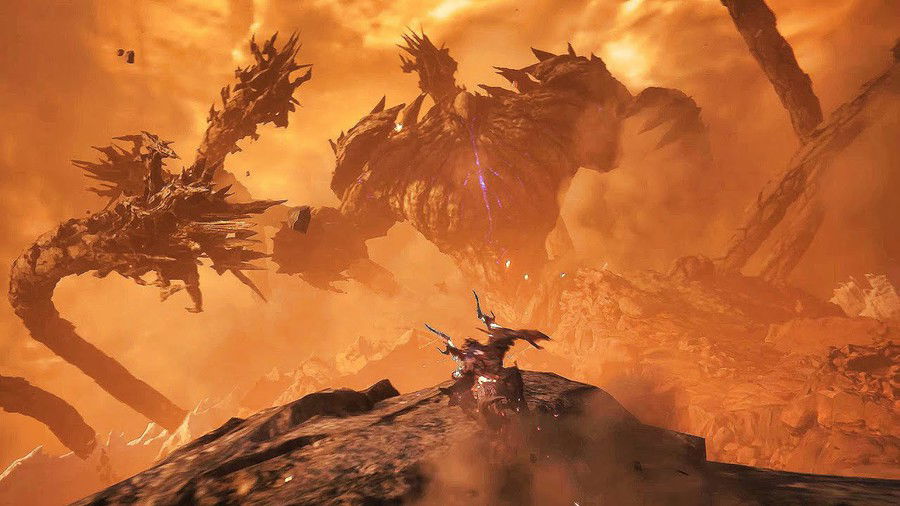
The high expectations with Final Fantasy XVI's bosses needed a starting point, and that point began with Titan.
After his defeat where he even lost his hands, Hugo Kupka succumbs to madness and becomes an easy prey for Habard's machinations, who convinces him to go to Dhalmekia's crystal to obtain the power to defeat his arch-enemy.
Upon arriving at the chamber, Clive comes across Hugo and an illusion of Benedikta created by the crystal, where his anger causes the surrounding ether to heal his arms as he transforms into Titan. Clive, for the first time, manages to voluntarily transform into Ifrit, starting the battle under Dhalmekia, where Titan throws rocks and demonstrates his speed in hand-to-hand combat, despite his size.
The highlight is its second phase, after Kupka feeds on the surrounding crystals to amplify the power of his ether. With the size of a mountain, Titan Lost gains tentacles in a threatening form, whose transformation launches Ifrit kilometers away and begins a sequence that proves the potential of the new generation of video games, with a battle in multiple stages in which Ifrit runs towards his enemy while dodging and shooting at obstacles, climbing his body, facing him from the top of a platform and reaching the sky, where he descends with one of Titan's spikes towards his head to finish him off.
While falling into the creature's body, Ifrit is attacked by Titan's smaller version in the third stage, where a fistfight with his opponent ends with the destruction of Dhalmekia's Mother Crystal and the Hugo's defeat, now dead and transformed into dust by the excess ether used in the battle, finally giving a well-deserved rest to Cid and so many others who lost their lives in the old Hideaway.
Memorable to the point of leaving players speechless, the battle against Titan is a visual spectacle in itself and was supported by Platinum Games, a developer who worked together with Square Enix to launch NieR: Automata, being the most talked about battle of Final Fantasy XVI on social media.
1 - Bahamut
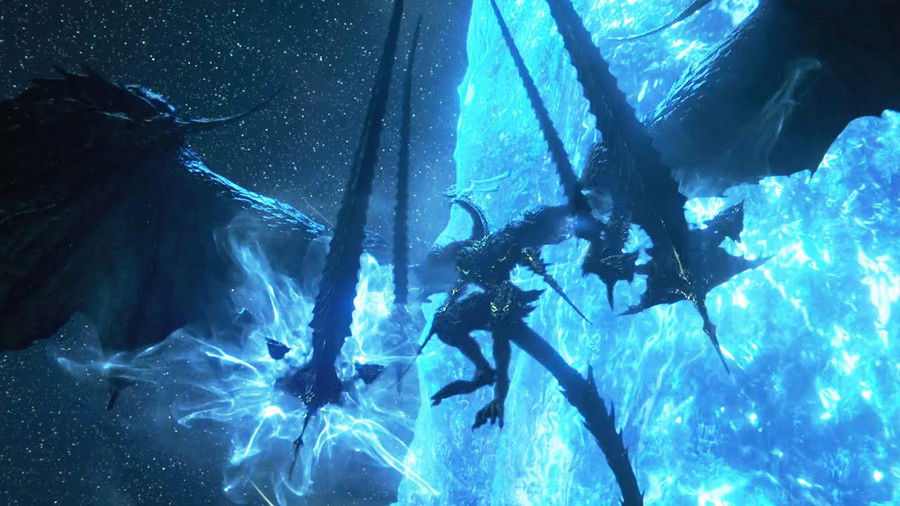
Final Fantasy XVI manages to raise boss standards even further with the events surrounding the Crystalline Dominion, where Clive, Jill and Torgal prepare to destroy its Crystal while Sanbrueque's dragoons, commanded by Dion Lesarge, launch a coup d'état against Anabella Rosfield and her son, Olivier Lesarge.
This is also the moment where Clive finally meets Joshua again when he primes into Phoenix to stop Bahamut from destroying the city. While trying to communicate with his brother and facing Ultima's minions along the way, Clive has the opportunity to confront his mother, Anabella, about her betrayal against Rosaria when he finds her hiding in one of the buildings.
Ad
The cathartic reunion between the brothers takes place on the battlefield, where Clive reaffirms his title of Shield of Rosaria and protects his fallen brother from an attack while priming into Ifrit, beginning a multi-stage clash. Like Titan, the battle against Bahamut is a visual spectacle in itself, with several changes in scenery and gameplay as the player alternates between controlling Ifrit and Phoenix, including some moments where they work together to defeat him.
An extra layer of emotion and visual impact is added when the Rosfield brothers fuse to form a single Eikon of Fire and fly into outer space to face Bahamut under the intense violin of the "Ascension" song, where the dragon has an arsenal of lasers, satellites and other powerful attacks that make it a challenging enemy.
Lasting almost an hour, the mix between an epic fight, the long-awaited reunion of the Rosfield brothers and the biggest highlight for Dion, one of the most loved by fans character, in addition to the unexpected outcome for Anabella, Bahamut stands out as the best and most memorable boss in Final Fantasy XVI, and the unfolding of these events are essential to the plot and also to Dion's personal development until the end of the game.
Conclusion
That's all for today.
Final Fantasy XVI certainly solidified itself in the series with the most epic large-scale battles in the franchise, and future games will have a great challenge in surpassing it in this regard!
With The Rising Tide expansion, scheduled to come out in 2024, this long list of clashes could expand even further with the duel between Ifrit and the mysterious Leviathan, the lost Eikon.
Thanks for reading!
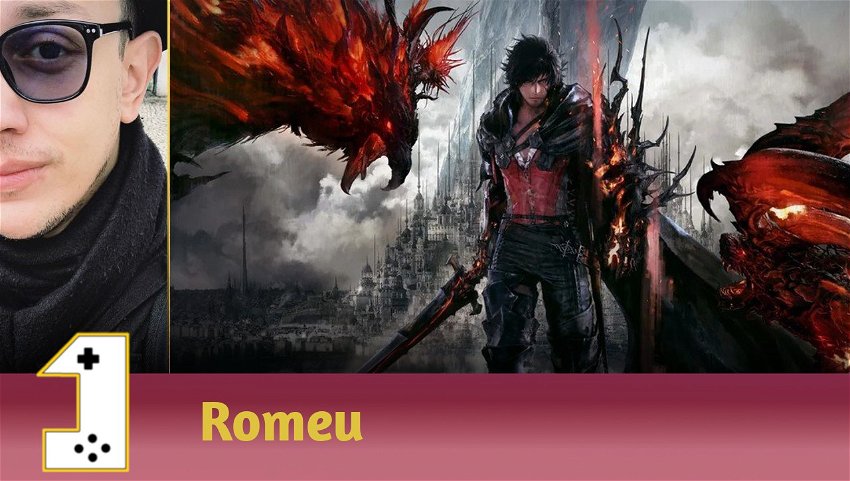

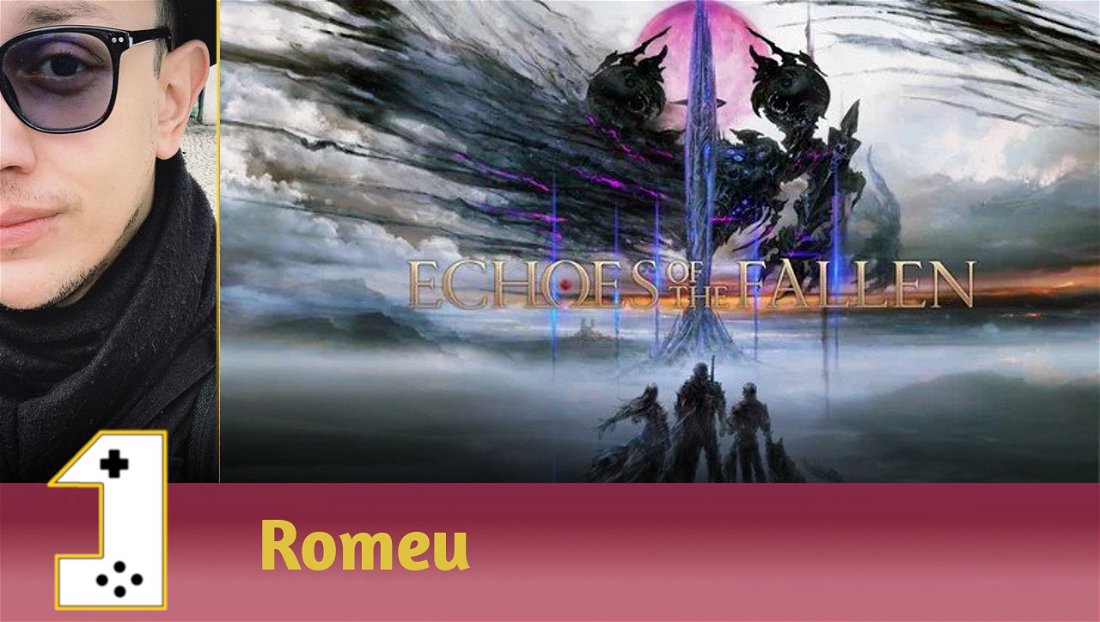
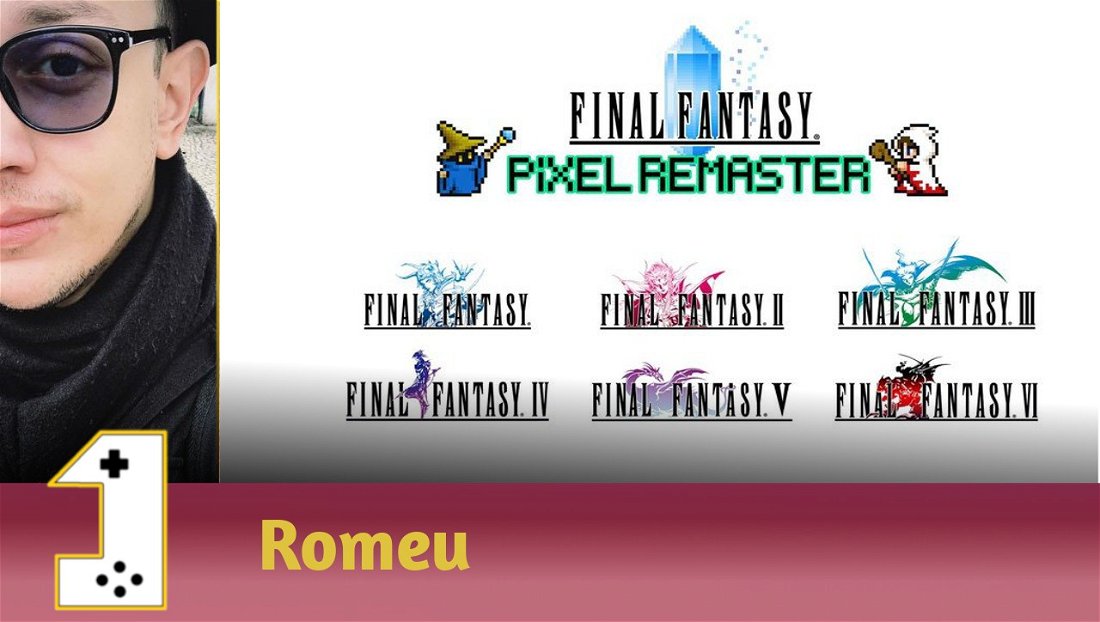



— 评论0
成为第一个发表评论的人